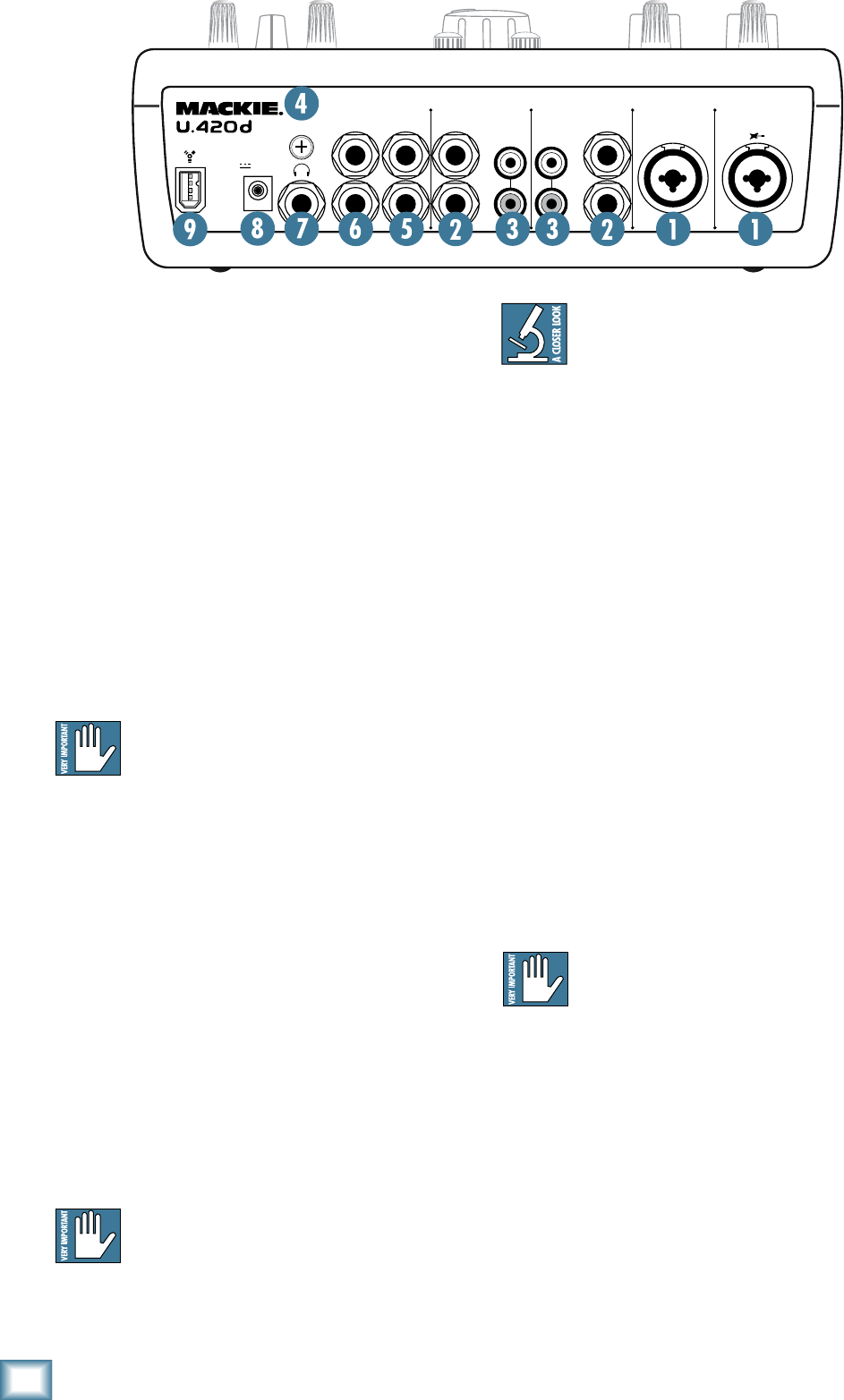
1
U.40d 4-Channel Mic/Line Mixer
U.420d 4-Channel Mic/Line Mixer
5. AUX Outputs
These 1/4" TRS outputs provide stereo line-level
output signals from the aux bus. You can connect these
outputs to the inputs of an external effects processor,
another PA system, or stage monitors. You can also use
unbalanced 1/4" TS connectors.
The stereo aux output is the sum of all channels
whose aux level controls [17 or 24] are set to more than
minimum. This gives you the chance to make a second
mix or send an individual channel from the mixer, inde-
pendent of the main level control [36].
You could use the aux output to feed stage monitors,
or to feed a headphone amplifier so you can wear head-
phones and look cool on stage. You will hear a different
mix than the audience is hearing.
If you plug a cable into the left aux output
jack, and leave the right output jack empty,
the right and left signals are summed together
to provide a mono output.
If you are going out to an external processor, you can
return its processed (wet) output to one of the mixer’s
line-level input channels.
. MAIN Outputs
These 1/4" TRS outputs provide stereo line-level sig-
nals from the main mix. Connect these to the balanced
inputs of the active speakers, or power amplifier(s)
powering your main speakers.
The main mix is the sum of all active channels cur-
rently playing, and any FireWire input. How much of
each channel that is heard in the main mix, is de-
termined by each channel’s level control, and by the
crossfader.
If you plug a cable into the left main output
jack, and leave the right output jack empty,
the right and left signals are summed together
to provide a mono output.
Balanced 1/4" TRS connections offer better
immunity to external noise (specifically, hum
and buzz) than 1/4" TS unbalanced connec-
tions. Because of this, it is the preferred interconnect
method, especially in cases where very long lengths of
cable are being used. A long unbalanced cable carries
with it more opportunity for noise to get into the system
— having balanced cables means very little noise
will enter the system. If you must use an unbalanced
connection, keep the cable length to 10 feet or less (3
meters).
7. HEADPHONES Output
This 1/4" TRS stereo jack is where you plug in your
stereo headphones.
The headphone volume is controlled by the phones
level control [35]. It is not affected by the main level
control [36].
The headphones output is either the main mix, taken
just before the main level control, or, if a cue button
[18] is pressed, the headphones play back the cue bus
instead. This allows you to cue up a source in the head-
phones before turning up its fader and adding it to the
main mix. The cue light [31] reminds you if any channel
has its cue button engaged.
Warning: The headphone amp may drive
the headphones to a loud level. It can cause
permanent hearing damage. Even intermedi-
ate levels may be painfully loud with some headphones.
Be careful!
Always start with the phones level control turned all the
way down before connecting headphones or making any
connections. Keep it down until you’ve put on the head-
phones, and turn it down whenever you press cue.
GND
PHONO
PHONO
LINE LINE
MIC/LINE MIC/LINE
1234
R
L
R
L
R
L
R
L
OUT
MAIN
OUT
AUX
(MONO)
R
L
POWER
18V,1.5A


















